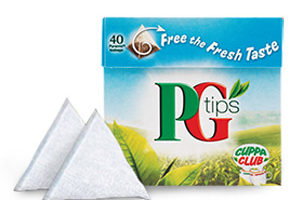
Why?
Cleaning your coffee brewer will ensure that you get the best taste out of your cup of joe. A lot of people overlook cleaning the coffee brewer because it just brews coffee from water and an unclean pot does not necessarily have immediate repercussions: no one drinks straight out of the pot, no milk or sugar is added to the pot directly, and because the only thing that goes through the machine is grounds and water. However, an unsanitized pot will slowly accumulate mineral deposits and not only affect the taste of the coffee produced, but can also affect the machine’s operation. If you are brewing with unfiltered tap water, cleaning your machine is particularly important. A dirty pot may break your brewer permanently! Therefore, proper maintenance is both recommended and necessary.
How Often?
If you have managed to hang onto your coffee brewer’s owner’s manual, not only do you have excellent organizational skills (we are jealous), but this is a great reference guide to how often you should clean your pot and the best methods to use. If you do not have the owner’s manual, it’s okay! Just use common sense. Cleaning your brewer once a month will make sure the brewer will remain operating normally. We recommend sanitizing the brewer once a week to make sure your coffee tastes as excellent as it should! At the very minimum, your brewer should be cleaned every other month.
Best Methods?
Fancy filters, brushes, and cleaning/sanitization pods are widely available, even right here on Coffee Wholesale. However, if you are more DIY motivated, you can clean most machines with common household cleaning agents. Here’s how we would recommend cleaning the top three types of coffee brewers:
- Standard Drop Coffee Brewer:
Empty the coffee pot and remove and discard the coffee filter. Wash the coffee filter basket with hot soapy water and replace. Fill the coffee pot to the top with two parts water and one part white vinegar. I add a very tiny amount of bleach (two drops should do the trick), which some people do not recommend, but it is safe when it’s a small amount and helps sanitize. You can leave it out if you want. You will be washing the pot later with soap so there is no harm. The vinegar breaks down the mineral deposits naturally. Pour the water/vinegar/bleach mixture into the water reservoir and brew like you would a normal pot of coffee. When the brew is over, dump the coffee pot, turn the machine off, and wash the inside and outside of the pot with warm soapy water. Now, fill a bowl up with warm water and baking soda. The more baking soda you use, the more abrasive the mixture will be. If there’s a lot of crust on your machine, use more baking soda. Scrub down the whole outside of the machine and re-wash the coffee filter basket. Wash the inside of the water reservoir with warm soapy water and a tiny bit of baking soda. Rinse until it rinses clear. Voila! Your drip brewer is clean. - Keurig:
Scrub the outside of the machine with warm soapy water or, if it’s particularly crusty, a mixture of warm water and baking soda. You will need to descale the water reservoir because over time, limescale will build up on the inside of your machine and, if left long enough, will break your machine altogether. Fill up the reservoir with two parts water to one part white vinegar. You can add a drop of bleach if you want. Brew through several cycles without a k-cup until you cannot smell vinegar in the cup of hot yucky discharge water. This will take about 15-20 minutes. Wash the drip tray, inside of the k-cup holder, and water reservoir out with hot soapy water. If you have a single cup maker (without a big water reservoir), you can’t really clean the inside of the machine with hot soapy water so skip that part. Visit Keurig’s Maintenance and Cleaning page for more details and specifics on cleaning your brewer. - Coffee Pod Brewer
Just to be clear, we are talking about the small single-serve coffee brewers that use pods — commonly found in hotels and office break rooms. These are a lot like cleaning keurigs without water reservoirs. The reservoirs are inaccessible, so to clean these machines, fill the reservoir up to the top with water, a drop of bleach, and a few splashes of white vinegar. Remove the filter holder, discard the used coffee pod, and replace. Now, brew a cup, refill the reservoir with plain water, and brew again. Repeat this step until you cannot smell vinegar and the water is brewing clear. Remove the coffee pod holder and drip tray, and scrub with warm soapy water. Clean the entire outside of the machine the same way. Use a mixture of water and baking soda if these parts are particularly crusty.



